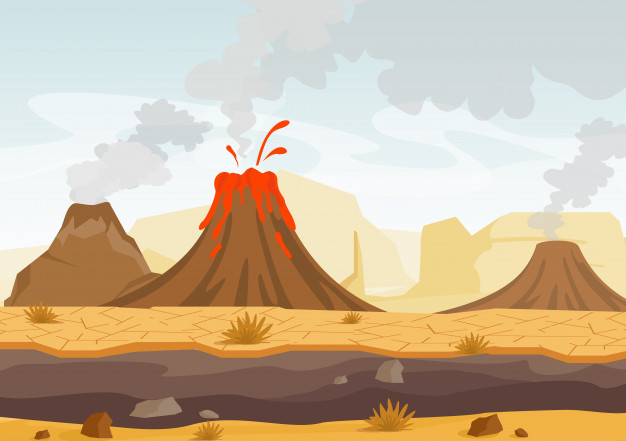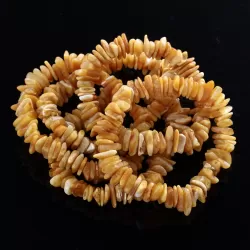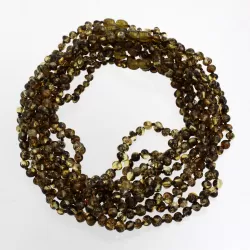
How Baltic amber is formed
Baltic amber is a type of fossilized tree resin that formed over millions of years. The process of amber formation involves several stages:
-
Tree Resin Secretion: The process begins when certain trees, primarily from the pine family (Pinaceae), exude resin as a defense mechanism against injuries or insect attacks. This sticky resin acts as a protective barrier for the tree.
-
Trapping Inclusions: As the resin flows down the tree's bark, it can trap various materials such as insects, plant matter, and sometimes even small vertebrates. These trapped inclusions become suspended in the resin.
-
Polymerization and Solidification: Over time, the resin undergoes a process called polymerization. This involves the volatile components of the resin evaporating, leaving behind a more stable and viscous substance. As the resin continues to polymerize, it becomes harder and eventually solidifies into a substance that is similar to what we know as amber.
-
Burial and Fossilization: For the resin to become fossilized amber, it needs to be buried relatively quickly by sediment, preventing it from decaying or being disturbed. Over millions of years, the resin-containing sediments become compacted and turn into rock formations. The pressure and heat from the Earth's crust cause the amber to undergo further changes, enhancing its preservation.
-
Transformation into Amber: During the fossilization process, the amber undergoes chemical changes. The polymerization that started when the resin was exuded continues, and the resin becomes a hardened, stable material. Over time, amber may also lose its original volatile compounds and can even acquire additional substances from the surrounding environment.
-
Erosion and Exposure: Over geological time scales, the layers of sediment containing the amber may be uplifted, exposed at the surface, and eroded by natural forces like wind, water, and weathering. This process exposes the amber-containing layers for discovery by humans.
-
Collection and Use: Once exposed, amber can be collected from the surface or extracted through mining. It has been used for various purposes throughout history, including for jewelry, amulets, and ornamental objects.
Baltic amber, in particular, is known for its abundant fossil inclusions, which provide valuable insights into the ancient ecosystems and biodiversity of the region. The exceptional preservation of insects and other small organisms in Baltic amber has made it a treasure trove for scientists studying prehistoric life.
In the dense forests of region now covered by the Baltic Sea, millions of years ago, these resin-bearing trees fell and were carried by rivers to coastal regions of Lithuania, western Russia and Poland. Trees and sticky clutches of conifer resins became covered with sediment, and over the years the sap resin evolved to a stable state, hardened into clear lumps. Although many amber deposits remain in ocean and ground residue, genuine Baltic amber can be found today.
35 and 50 million years ago climate change made conifer trees to exude big amounts of resin in regions covered by the Baltic Sea. Natural resin oozed its way out of a tree and eventually fossilized, hardened into clear lumps. Nowadays amber is extracted from ground or collected when it is washed up onshore, main area where most amber is found is Lithuania and countries near by.












